Bertoia High Back Chair and Ottoman
Designed by Harry Bertoia, 1952
The Bird Chair is an astounding study in space, form and function by one of the master sculptors of the last century.
Share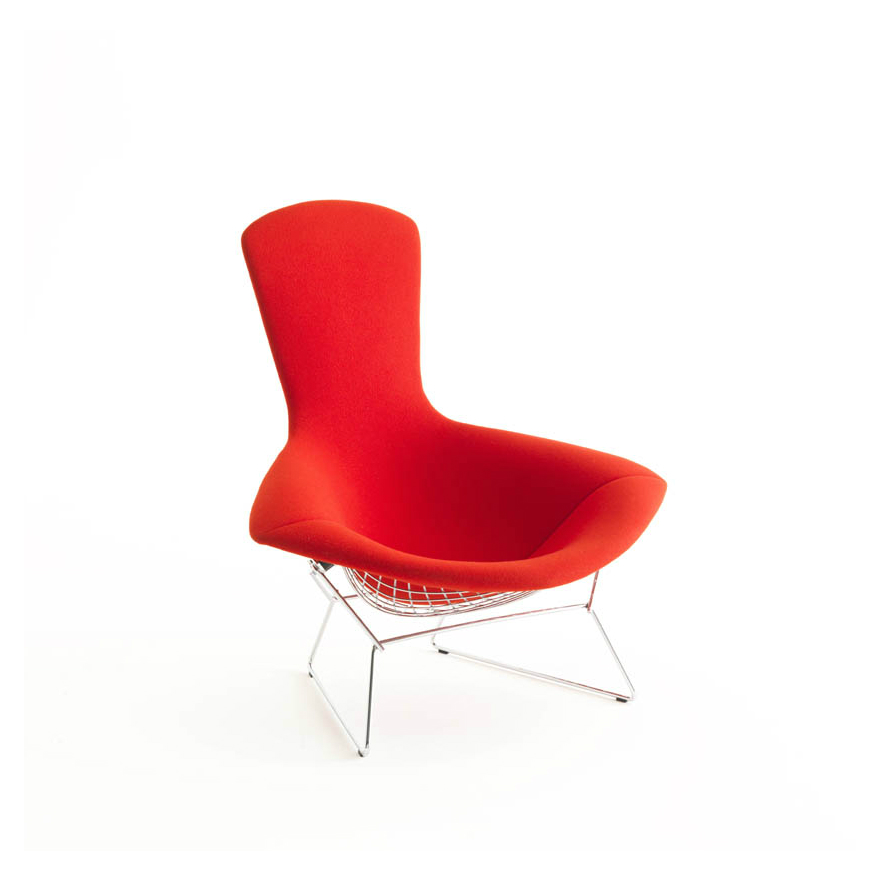
The Bird Chair is an astounding study in space, form and function by one of the master sculptors of the last century.
Share

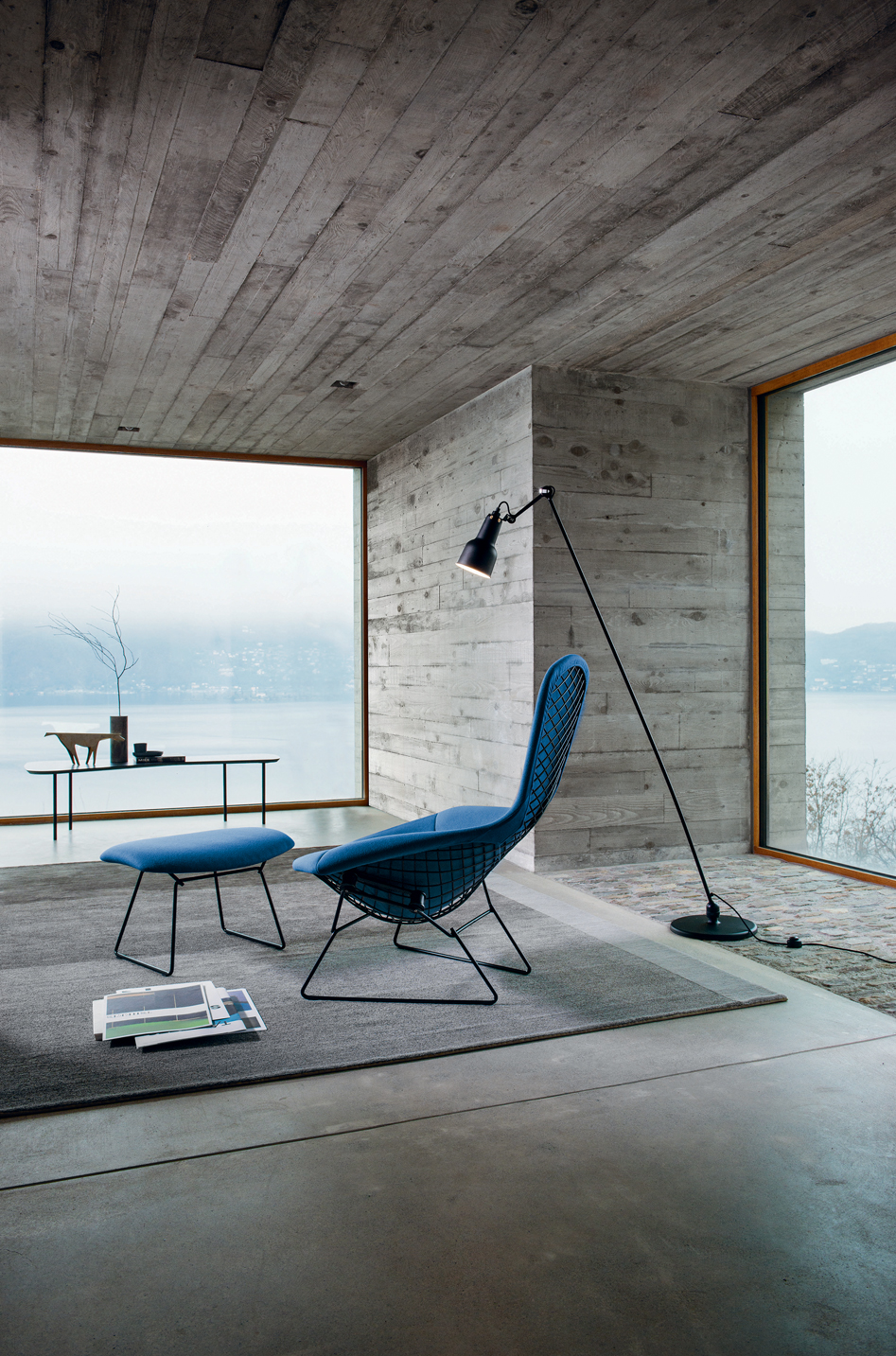
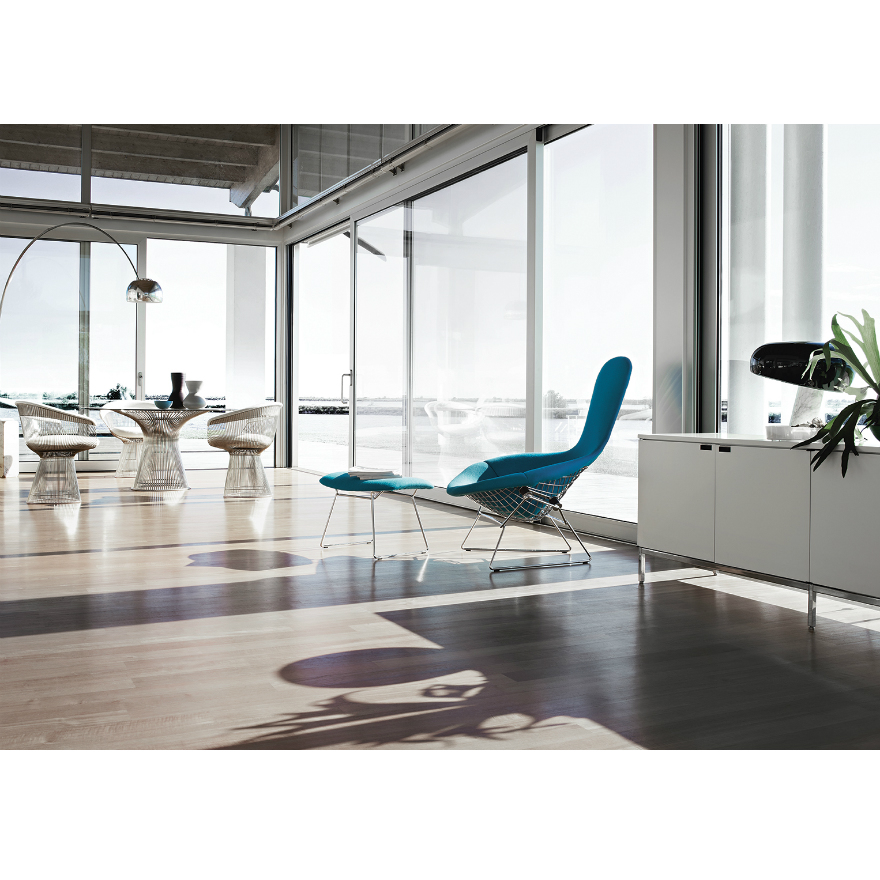
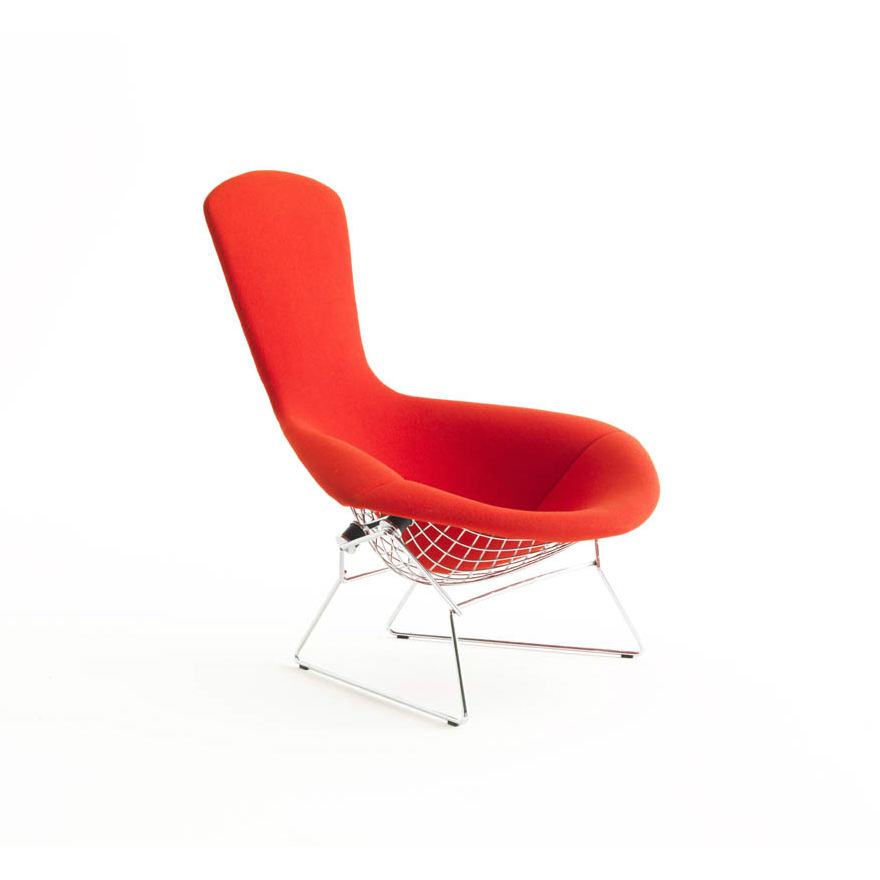
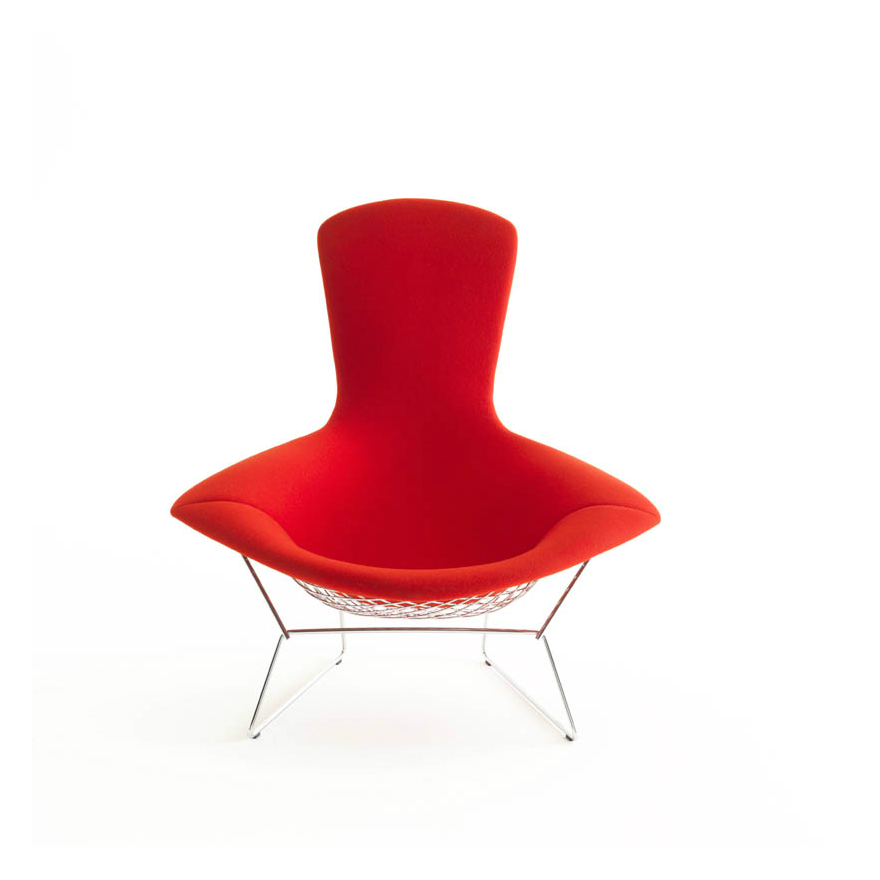
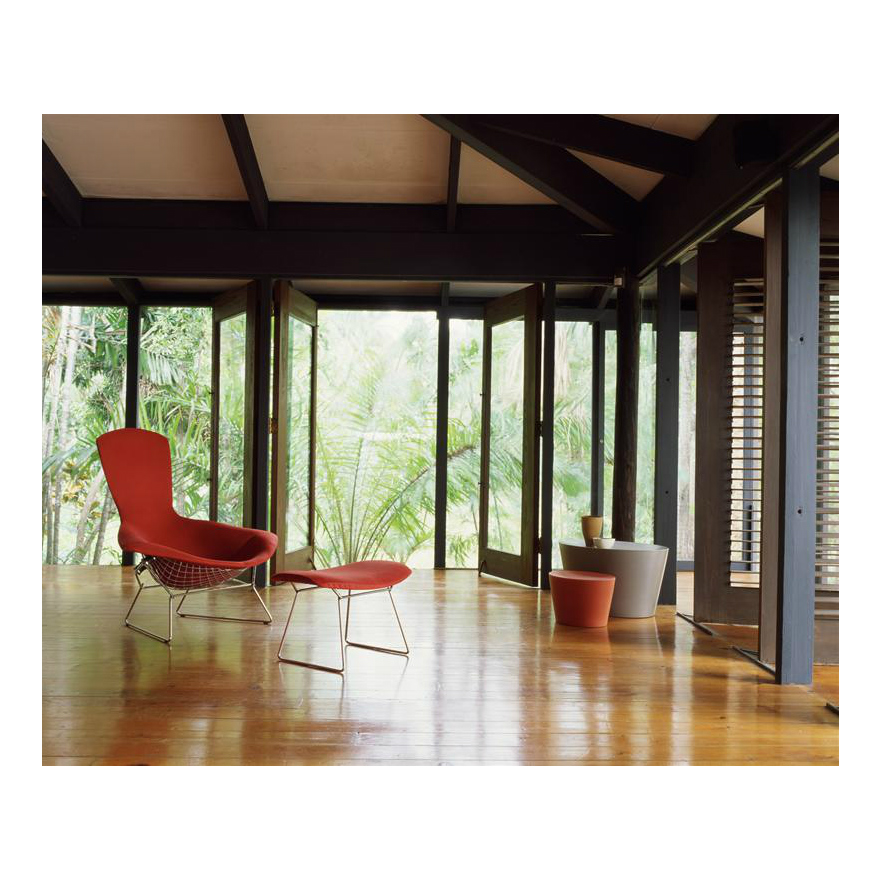
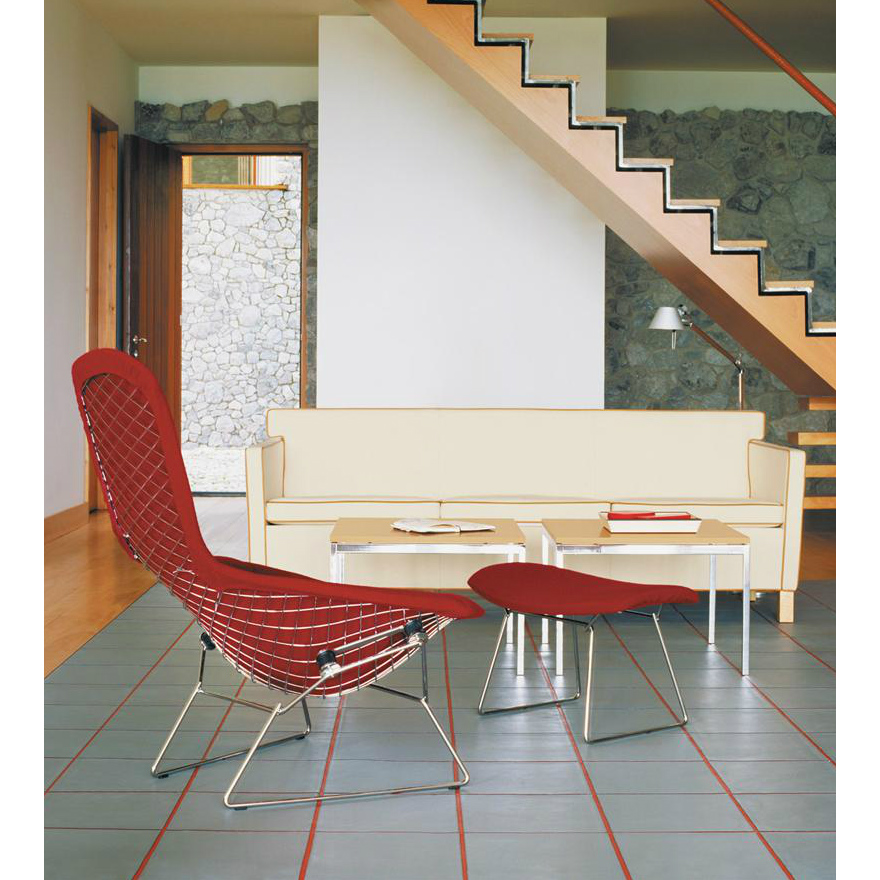
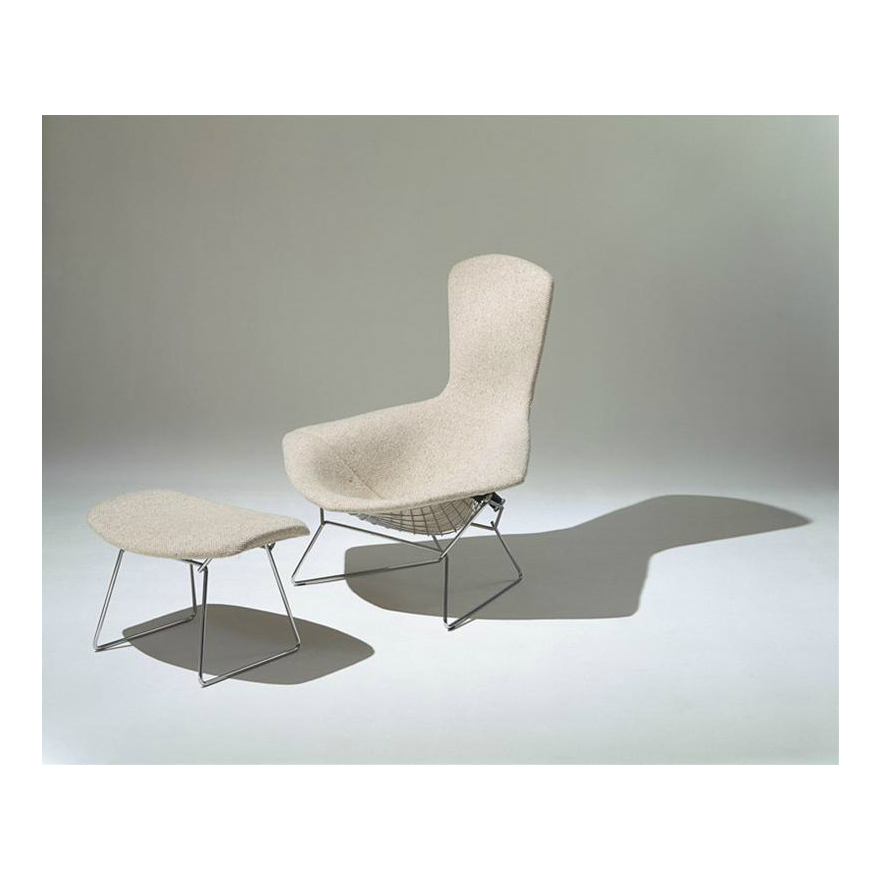
Part of Harry Bertoia's exceptionally artistic 1952 seating collection sculpted from bent metal rods, the Bertoia high-back chair enhances virtually any environment.
The Bertoia high back chair and its ottoman are available fully upholstered only. The Knoll logo is stamped into the base of the chair and the ottoman.
Frame is welded steel with rods in polished chrome.
Full covers are streched over and attach with hooks.
Polished chrome only.
High back chairs and ottomans are fully upholstered in a wide range of fabrics. This products are available with foam that meets requirements for BS5852.
High Back Chair: 98cm W x 89cm D x 101cm H, with seat height at 38cm.
Ottoman: 62cm W x 44cm D x 39cm H.
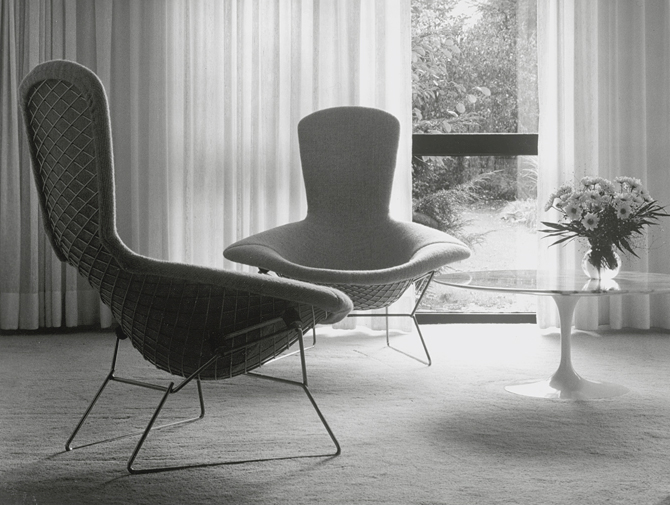
Characteristic of the early environment at Knoll, Hans and Florence never demanded that Bertoia design furniture, but instead encouraged him to explore whatever he liked. They simply asked that if he arrived at something interesting, to show them. Bertoia later explained the process:
“I went around and discovered, quite soon, that I was not the man to do research. My feeling was that had to come from an inward direction. I began to rely once more on my own body. I began to think in terms of what I would like as a chair. It started very slowly…I came into rod or wire, whether bent of straight. I seemed to find myself at home. It was logical to make an attempt utilising the wire. "Once more, I went through the procedure of positioning, considering the possibility of shapes, then relating, of course, what the wire itself could be, what shapes it might take, whether there were any tools to do it with. There are many aspects of the same things coming into one’s mind, but the very first thing was whether a shape would come up that would begin to serve as a chair, sitting on it, etc. One was taking the shape of a side chair; another was beginning to extend to care of the head. This developed to the point where something could be held on to…You know, when you have something in front of you that can really physically be held, it becomes easier to make changes.”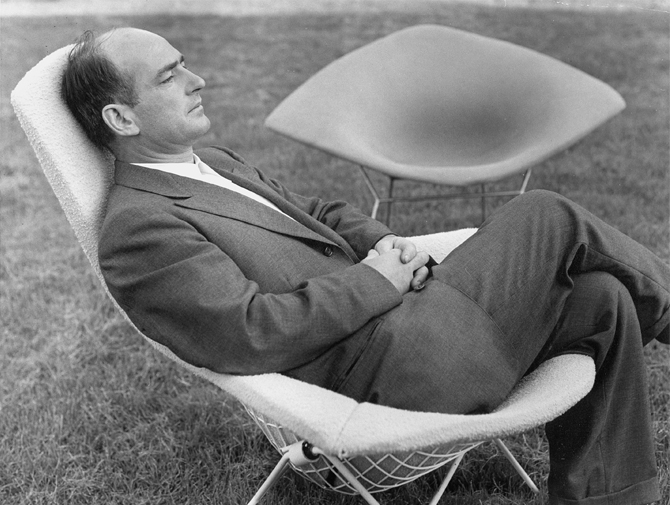
Italian sculptor, university lecturer and furniture designer Harry Bertoia displayed a unique stroke of genius with his patented Diamond Chair for Knoll International in 1952. Bertoia was an inventor of form and an enricher of furniture design with his introduction of a new material: he turned industrial wire rods into a design icon. Educated at Detroit Technical High School, the Detroit School of Arts and Crafts and Cranbrook Academy of Art in Bloomfield Hills, Michigan, Bertoia taught metal crafts at Cranbrook. He worked with Charles Eames to develop his signature moulded plywood chairs. Eero Saarinen commissioned him to design a metal sculptured screen for the General Motors Technical Center in Detroit. His awards include the craftsmanship medal from the American Institute of Architects, as well as AIA's Gold Medal.
"In sculpture, I am primarily concerned with space, form and the characteristics of metal. In the chairs, many functional problems have to be satisfied first... but when you get right down to it, the chairs are studies in space, form and metal too."